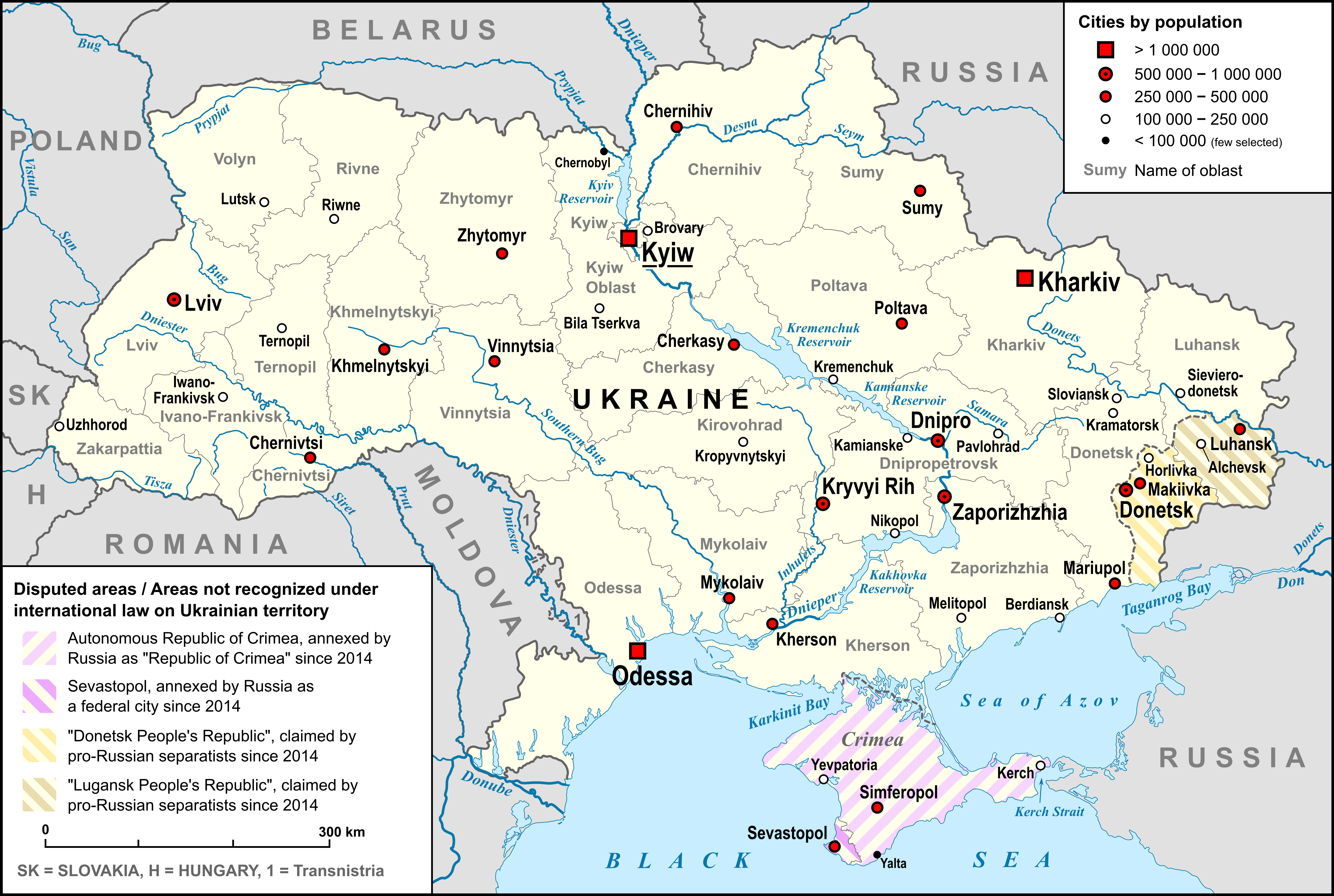|
Samar, Ukraine
Samar (), formerly known as Novomoskovsk () until 2024, is a List of cities in Ukraine, city and List of hromadas of Ukraine, municipality in Dnipropetrovsk Oblast, Ukraine. It serves as the administrative center of Samar Raion within the oblast. Samar is located predominantly on the right bank of the Samara (Dnieper), Samara River, a left tributary of the Dnieper, Dnieper River. The city is located from the administrative center of the oblast, Dnipro. As of January 2022, Novomoskovsk's population was approximately History A city with the name Samar (now known as Samar, Dnipro, Old Samar) has existed from the end of the 17th century. The Cossacks abandoned the town in 1688 when Tsardom of Russia, Russia built the Bohorodytska Fortress in the city. Soon after, the former inhabitants of the Old Samar founded another settlement named Samar upstream the Samara River. In 18th-century documents, the city is also named Samarchyk, Novoselytsia or Palanka. The town was the administrativ ... [...More Info...] [...Related Items...] OR: [Wikipedia] [Google] [Baidu] |
List Of Cities In Ukraine
There are 463 populated places in Ukraine, populated places in Ukraine that have been officially granted city status () by the Verkhovna Rada, the country's parliament, as of 23 April 2025. Settlements with more than 10,000 people are eligible for city status although the status is typically also granted to settlements of historical or regional importance. Smaller settlements are Populated places in Ukraine#Rural settlements, rural settlements () and villages (). Historically, there were systems of city rights, granted by the territorial lords, which defined the status of a place as a ''misto'' or ''selo''. In the past, cities were self-governing and had several privileges. The list of cities is roughly ordered by population and the 2022 estimates are compared to the 2001 Ukrainian census, except for Chernobyl for which the population is an unofficial estimate. The City with special status, cities with special status are shown in ''italic''. The average population size is 62,000. ... [...More Info...] [...Related Items...] OR: [Wikipedia] [Google] [Baidu] |
Samar, Dnipro
Samar () is a neighborhood of the Samarskyi District ( urban district) of the city of Dnipro in southern Ukraine. It is located at the mouth of Samara River on its right bank where the river enters Dnieper. Samar, originally a Cossack settlement, was destroyed in 17th century and consequently rebuilt in a different location, and is thus sometimes called Old Samar () to distinguish it from the New Samar. History The exact year of foundation of the city is still researched. Archeologic founds suggest that the town existed in 1524.Dnipro: pages of the city's history. The first page is Cossack dnipro.libr.dp.ua (21 September 2017) In 2011 |
Novomoskovsk Raion
Samar Raion (), until 2024 known as Novomoskovsk Raion (), is a raion (district) of Dnipropetrovsk Oblast, southeastern-central Ukraine. Its administrative centre is located at Samar. Population: On 18 July 2020, as part of the administrative reform of Ukraine, the number of raions of Dnipropetrovsk Oblast was reduced to seven, and the area of Novomoskovsk Raion was significantly expanded. One abolished raion, Mahdalynivka Raion, as well as the city of Novomoskovsk (which was previously incorporated as a city of oblast significance and did not belong to the raion), were merged into Novomoskovsk Raion. The January 2020 estimate of the raion population was On 19 September 2024, the Verkhovna Rada voted to rename Novomoskovsk Raion to Samar Raion. Subdivisions Current After the reform in July 2020, the raion consisted of eight hromadas: * Cherkaske settlement hromada with the administration in the rural settlement of Cherkaske, retained from Novomoskovsk Raion; * Chernechchin ... [...More Info...] [...Related Items...] OR: [Wikipedia] [Google] [Baidu] |
City Of Regional Significance (Ukraine)
A city of regional significance () in Ukraine was a type of second-level Administrative divisions of Ukraine, administrative division or municipality, the other type being Raions of Ukraine, raions (districts). In the first-level division of Oblasts of Ukraine, oblasts, they were referred to as ''cities of oblast significance''; in the first-level autonomous republic of Autonomous Republic of Crimea, Crimea, they were ''cities of republican significance''. The designation was created with the introduction of oblasts in 1932. It was abolished in a 2020 reform that merged raions together and integrated the city municipalities into them. Such city municipality was complex and usually combined the city proper and adjacent populated places. The city of regional (oblast) significance was governed by a city council known as ''mis'krada'', which was chaired by a mayor. There were instances where a municipality might have included only the city alone (city proper), while in others instanc ... [...More Info...] [...Related Items...] OR: [Wikipedia] [Google] [Baidu] |
Ukrainian People's Republic
The Ukrainian People's Republic (UPR) was a short-lived state in Eastern Europe. Prior to its proclamation, the Central Council of Ukraine was elected in March 1917 Ukraine after the Russian Revolution, as a result of the February Revolution, and in June, it First Universal of the Ukrainian Central Council, declared Ukrainian autonomy within Russia. Its autonomy was later recognized by the Russian Provisional Government. Following the October Revolution, the Central Council of Ukraine denounced the Bolsheviks, Bolshevik seizure of power and Third Universal of the Ukrainian Central Council, proclaimed the Ukrainian People's Republic with a territory including the area of approximately eight Russian imperial governorates (Kiev Governorate, Kiev, Volhynia Governorate, Volhynia, Kharkov Governorate, Kharkov, Kherson Governorate, Kherson, Yekaterinoslav Governorate, Yekaterinoslav, Poltava Governorate, Poltava, Chernigov Governorate, Chernigov and Podolia Governorate, Podolia). It F ... [...More Info...] [...Related Items...] OR: [Wikipedia] [Google] [Baidu] |
Oles Honchar
Oleksandr "Oles" Terentiiovych Honchar (; []; 3 April 1918 – 14 July 1995) was a Soviet and Ukraine, Ukrainian writer and public figure. He also was a veteran of World War II and member of the Verkhovna Rada, Ukrainian parliament. Biography Early years It has commonly been written that Oles Honchar was born in Sukha '' sloboda (settlement), sloboda'' (now village) in , Poltava Governorate, Russian Empire in a family of factory workers, Terentiy Sydorovych and Tetiana Havrylivna Bilychenko (). However more recently found documents from the regional archives of Dnipropetrovsk Region tell that he was born in a village of Lomivka, which just before World War II was incorporated into the city of Dnipropetrovsk. His mother died when he was three, and his father perished on a job site later in 1941. Being left parentless, he was taken by his maternal grandparents to live in the village of Sukhe. Living with his maternal grandparents, Oleksandr took their last name and, thus, be ... [...More Info...] [...Related Items...] OR: [Wikipedia] [Google] [Baidu] |
The Cathedral (Honchar Novel)
''The Cathedral'' () is a 1968 novel by Oles Honchar. It was Honchar's best known novel but also saw him come under censure by the Brezhnev regime. The book was initially well received and massively popular among students. After sudden criticism of the novel, a group of literature students organized a defense of the novel, leading to surveillance and reprisals from the KGB. A planned translation to Russian was halted and the Ukrainian edition withdrawn. The titular cathedral was based on the story of the Holy Trinity Cathedral in Samar, Ukraine.Kamusella op.cit., p. 243-4 () The Russian translation was published in Roman-Gazeta issue 7, 1987. English translation – ''The Cathedral'': A Novel. Trans. by Yuri Tkach and Leonid Rudnytzky. St. Sophia Religious Association of Ukrainian Catholics, 1989. Paperback, 308 pages. See also * List of Ukrainian-language poets * List of Ukrainian-language writers * Ukrainian literature The term Ukrainian literature () is normally used ... [...More Info...] [...Related Items...] OR: [Wikipedia] [Google] [Baidu] |
Radio Free Europe
Radio Free Europe/Radio Liberty (RFE/RL) is a media organization broadcasting news and analyses in 27 languages to 23 countries across Eastern Europe, Central Asia, the Caucasus, and the Middle East. Headquartered in Prague since 1995, RFE/RL operates 21 local bureaus with over 500 core staff, 1,300 freelancers, and 680 employees. Nicola Careem serves as the editor-in-chief. Founded during the Cold War, RFE began in 1949 targeting Soviet empire, Soviet satellite states, while RL, established in 1951, focused on the Soviet Union. Initially funded covertly by the Central Intelligence Agency, CIA until 1972, the two merged in 1976. RFE/RL was headquartered in Munich from 1949 to 1995, with additional broadcasts from Portugal's Glória do Ribatejo until 1996. Soviet authorities jammed their signals, and Second World, communist regimes often infiltrated their operations. Today, RFE/RL is a private 501(c)(3) corporation supervised by the United States Agency for Global Media, which ... [...More Info...] [...Related Items...] OR: [Wikipedia] [Google] [Baidu] |
The History Of Cities And Villages Of The Ukrainian SSR
''The History of Cities and Villages of the Ukrainian SSR'' () is a Ukrainian encyclopedia, published in 26 volumes. It provides knowledge about the history of all populated places in Ukraine. It was approved by the Communist Party of Ukraine in 1962 and published for the first time the very same year. The chief editor was the noted scholar and historian Petro Tronko. This is the first thorough historical work of its kind. Each volume covered the history of all populated places in different regions of Ukraine, and at that time they numbered almost 40,000. The encyclopedia played an important role in collecting materials for writing essays about the villages. The encyclopedia was compiled by the State Historical Library of Ukraine together with the NASU Institute of History of Ukraine (part of the National Academy of Sciences of Ukraine, NASU). The publication of ''History of towns and villages of the Ukrainian SSR'' was also published in Russian. There were published 26 volumes ... [...More Info...] [...Related Items...] OR: [Wikipedia] [Google] [Baidu] |
Catherine II
Catherine II. (born Princess Sophie of Anhalt-Zerbst; 2 May 172917 November 1796), most commonly known as Catherine the Great, was the reigning empress of Russia from 1762 to 1796. She came to power after overthrowing her husband, Peter III of Russia, Peter III. Under her long reign, inspired by the ideas of the Age of Enlightenment, Enlightenment, Russia experienced a renaissance of culture and sciences, which led to the founding of many new cities, universities, and theatres, along with large-scale immigration from the rest of Europe and the recognition of Russia as one of the great powers of Europe. In her accession to power and her rule of the empire, Catherine often relied on her noble favourites, most notably Count Grigory Orlov and Grigory Potemkin. Assisted by highly successful List of Russian field marshals, generals such as Alexander Suvorov and Pyotr Rumyantsev, and List of Russian admirals, admirals such as Samuel Greig and Fyodor Ushakov, she governed at a time ... [...More Info...] [...Related Items...] OR: [Wikipedia] [Google] [Baidu] |
Zaporozhian Cossacks
The Zaporozhian Cossacks (in Latin ''Cossacorum Zaporoviensis''), also known as the Zaporozhian Cossack Army or the Zaporozhian Host (), were Cossacks who lived beyond (that is, downstream from) the Dnieper Rapids. Along with Registered Cossacks and Sloboda Cossacks, Zaporozhian Cossacks played an important role in the history of Ukraine and the ethnogenesis of Ukrainians. The Zaporozhian Sich grew rapidly in the 15th century from serfs fleeing the more controlled parts of the Polish–Lithuanian Commonwealth. The least controlled region, that was located between the Dniester and mid-Volga was first known from the 15th century as the '' Wild Fields'', which was subject to colonization by the Zaporozhian Cossacks.Shcherbak, V.Wild Field (ДИКЕ ПОЛЕ). ''Encyclopedia of History of Ukraine''. 2004 Zaporozhian Host became established as a well-respected political entity with a parliamentary system of government. During the course of the 16th, 17th and well into the 18th c ... [...More Info...] [...Related Items...] OR: [Wikipedia] [Google] [Baidu] |





